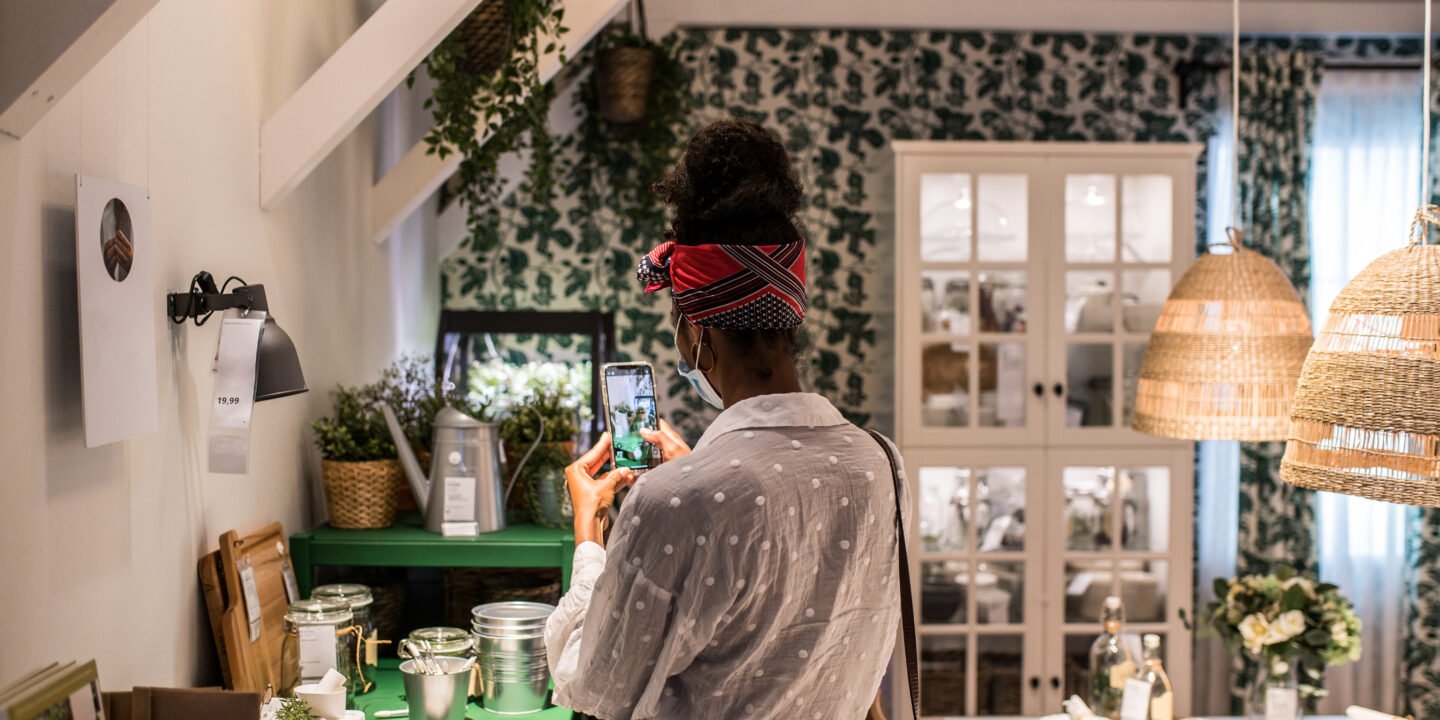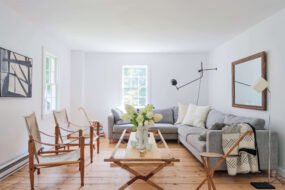
Home décor doesn’t have to be expensive to make your space feel inviting and stylish. In fact, DIY décor can not only be a fun and fulfilling creative outlet but also a great way to personalize your home without breaking the bank. Whether you’re moving into a new place, refreshing a tired room, or just want to add a bit of flair, DIY projects allow you to infuse your personality and unique style into every corner of your home.
In this blog post, we’ll explore 10 easy and creative DIY home décor ideas that can transform your space without draining your wallet. From handmade wall art to upcycled furniture, these projects will help you create a home that feels truly yours while sticking to a budget.
1. DIY Geometric Wall Art
Adding a pop of color or a unique pattern to your walls is an easy way to transform a room. Geometric wall art is trendy, modern, and surprisingly simple to create. You can achieve a sophisticated look with just a few basic supplies and a bit of creativity.
Materials Needed:
- Canvas or wooden boards
- Painter’s tape
- Acrylic paint in your choice of colors
- Paintbrushes or foam rollers
How to Get Started:
- Prep the Surface: Start by choosing your canvas or wooden board. Clean the surface and prime it if necessary.
- Apply Painter’s Tape: Use painter’s tape to create geometric patterns on the surface, such as triangles, stripes, or diamond shapes. Be sure the tape is firmly pressed to prevent any paint from bleeding through.
- Paint: Using acrylic paint, fill in the areas between the tape with your chosen colors. You can mix different shades for a bold effect or keep it neutral for a more subtle look.
- Remove the Tape: Once the paint is dry, carefully peel off the painter’s tape to reveal the sharp geometric lines.
- Hang: Once your art is fully dry, hang it up and enjoy your modern, custom wall piece.
Geometric art works well in any room—living rooms, bedrooms, even offices—and the best part is that you can customize the design to match your existing décor.
2. Upcycled Wooden Pallet Shelves
Wooden pallets are one of the most versatile and budget-friendly materials for DIY projects. If you have some old pallets lying around, they can easily be turned into stylish and functional floating shelves. Pallet shelves give a rustic touch to any room and are great for displaying books, plants, and décor items.
Materials Needed:
- Wooden pallets (usually free or inexpensive)
- Sandpaper or a sander
- Wood screws and a drill
- Wall brackets or mounting hardware
How to Get Started:
- Prepare the Pallet: Sand the pallet to remove rough edges and splinters. If you want to give it a polished look, you can stain or paint it in your preferred color.
- Cut to Size (Optional): If the pallet is too large for your space, you can cut it down to fit your needs. Use a saw to trim the wood and make it more manageable.
- Mount the Shelves: Install wall brackets or mounting hardware, ensuring they are sturdy enough to hold the weight of the pallet. You can drill the pallet directly into the wall studs or use strong anchors for drywall.
- Style the Shelves: Place your favorite decorative items like plants, books, or candles on the shelves. These rustic shelves can bring both style and function to your space.
This simple yet effective project not only saves money but adds a touch of industrial charm to your home.
3. DIY Fabric Wall Hangings
If you’re looking for a way to add texture and color to your walls without the expense of large paintings or framed prints, consider creating a fabric wall hanging. This is a simple and customizable project that can be done in an afternoon.
Materials Needed:
- Fabric (cotton, linen, or any fabric that suits your style)
- Wooden dowel or branch
- Scissors
- Thread or string for hanging
- Fabric glue or a sewing machine (optional)
How to Get Started:
- Choose Your Fabric: Pick a fabric that complements your room’s color scheme and style. You can even mix different patterns and colors to create a boho-inspired look.
- Cut to Size: Measure and cut the fabric to your desired length. You can leave it long for a dramatic effect or shorter for a more minimalistic design.
- Add a Hanging Rod: Attach a wooden dowel or branch to the top of your fabric by folding over the edge and securing it with fabric glue or by sewing it. This will allow you to hang it easily.
- Hang and Style: Thread string or twine through the dowel to create a hanging loop. Hang the fabric on a wall hook or nail. For added flair, you can add fringe or tassels at the bottom of the fabric.
This project adds bohemian flair to bedrooms, living rooms, or even entryways while being cost-effective and customizable.
4. Custom Throw Pillows
Throw pillows are an easy and inexpensive way to update your living room or bedroom. Instead of buying new ones, why not create your own? Custom throw pillows allow you to choose the fabric, colors, and designs that will best suit your space.
Materials Needed:
- Plain pillow covers or fabric
- Sewing machine or fabric glue
- Stuffing or pillow inserts
- Fabric paint, stamps, or embroidery thread (optional)
How to Get Started:
- Choose Your Fabric: Pick fabric that matches your room’s theme or color palette. You can use solid colors, patterns, or even upcycle old clothes to create a patchwork design.
- Sew or Glue the Pillow Cover: If you’re using fabric, sew it into a pillow cover, leaving one side open to insert the stuffing. Alternatively, you can buy plain pillow covers and add your personal touch by painting or embroidering on them.
- Add Personal Details: For a unique look, use fabric paint to create geometric shapes, words, or abstract designs. Alternatively, add embroidered details like names, initials, or patterns.
- Stuff the Pillow: Once your cover is complete, insert the pillow stuffing or use a store-bought pillow insert. Sew or glue the opening shut.
Custom throw pillows are a fantastic way to bring new life into your living space, and they can be easily swapped out to reflect different seasons or holidays.
5. Mason Jar Light Fixtures
Mason jars are incredibly versatile and can be used to make beautiful and rustic light fixtures. This project adds a cozy, farmhouse feel to any room, especially in kitchens, dining areas, or living rooms. You can easily create a DIY chandelier or pendant lights with just a few supplies.
Materials Needed:
- Mason jars
- Pendant light kit or lightbulb sockets
- Wire or rope (optional for hanging)
- Screws and a drill
- Lamp shades or decorative elements (optional)
How to Get Started:
- Prepare the Jars: Drill a hole in the lid of the mason jar to fit the light fixture kit. If you’re creating multiple pendant lights, use several mason jars for a chandelier or cluster design.
- Attach the Light Fixture: Insert the lightbulb socket through the hole in the lid and screw it into place. You can use a pendant light kit or a simple bulb socket with a cord for hanging.
- Mount and Hang: If you’re creating a pendant light, attach the mason jar to a ceiling hook using wire or rope. For a chandelier effect, use multiple jars attached to a central mounting base.
- Add Decorative Touches: If desired, you can add lampshades, paint the jars, or decorate them with twine or lace to match your room’s theme.
This project is a fantastic way to create affordable, unique lighting while adding a warm, rustic touch to your home.
6. DIY Succulent Planters
Succulents are low-maintenance plants that add a modern and earthy vibe to your home. DIY succulent planters are easy to make and can be customized to fit your style. From geometric concrete planters to upcycled tin cans, the possibilities are endless.
Materials Needed:
- Planter base (tin cans, wooden boxes, concrete, or ceramic pots)
- Small succulents
- Potting soil
- Paint (optional for customization)
- Decorative stones or moss (optional)
How to Get Started:
- Prepare the Planter: Choose a base for your succulent planter. If using tin cans or small boxes, clean them thoroughly. You can paint or decorate the containers to suit your décor.
- Add Soil: Fill the bottom of your planter with a layer of drainage stones (optional) and then add potting soil.
- Plant the Succulent: Place the succulent in the soil, ensuring it is planted securely. Gently pat the soil around the roots.
- Decorate: For an extra touch, top the soil with decorative stones or moss. This helps the planter look polished and adds texture.
Succulent planters are not only beautiful but also a great way to add life to your space without a lot of upkeep. They work well on shelves, windowsills, or coffee tables.
7. Repurposed Furniture Makeover
Old furniture doesn’t have to stay old! A repurposed furniture makeover is a fantastic way to breathe new life into tired or outdated pieces. With a little paint, new hardware, or a new fabric covering, you can turn an old dresser, table, or chair into something beautiful and functional again.
Materials Needed:
- Old furniture piece
- Sandpaper
- Paint or stain
- New knobs or handles
- Fabric (for upholstery, if needed)
- Fabric glue or a staple gun
How to Get Started:
- Sand and Prep: Start by sanding the furniture to remove any old paint or finish. If you’re working with wood, be sure to sand it down to a smooth surface.
- Paint or Stain: Apply your chosen paint or stain to the furniture. You can choose a bold color for a statement piece or go for a more neutral tone for versatility.
- Change the Hardware: Swapping out the knobs or handles can make a huge difference in the overall look of your furniture. Choose modern or vintage knobs to match your design.
- Reupholster (Optional): If you’re working with upholstered furniture, remove the old fabric and replace it with something fresh. You can use fabric glue or a staple gun to secure the new fabric.
Repurposing old furniture is a budget-friendly way to create unique pieces that fit your style and needs.
8. Boho Wall Macramé
Macramé is a trend that has made a major comeback in recent years, and for good reason. It adds texture, charm, and an artistic touch to any space. You can create your own boho wall hanging with a few simple knots and a bit of patience.
Materials Needed:
- Macramé cord or thick yarn
- Wooden dowel or branch
- Scissors
How to Get Started:
- Choose Your Design: Search for simple macramé patterns online, or create your own by experimenting with different knots (like square knots and lark’s head knots).
- Prepare the Cord: Cut several lengths of macramé cord. The length will depend on how large you want your wall hanging to be.
- Knot the Cord: Start by tying the cords to the wooden dowel or branch. Work with different knots and patterns to create texture and design.
- Finish the Piece: Once you have completed the desired design, trim the bottom to create a fringe or clean edge.
Macramé works great in bohemian-themed rooms and adds a cozy, handcrafted feel to your walls.
9. DIY Rug from Old T-Shirts
If you’re in need of a rug but don’t want to spend a lot of money, consider making your own using old t-shirts! This is a sustainable way to reuse fabric and create something both functional and stylish.
Materials Needed:
- Old t-shirts (in various colors)
- Scissors
- Hot glue gun or a needle and thread
- Rug backing (optional)
How to Get Started:
- Prepare the Fabric: Cut the old t-shirts into strips, making them about 1-2 inches wide.
- Create the Rug: Lay the strips out in a circular or rectangular pattern and glue or sew them together. You can create a spiral design or simply sew them in rows for a traditional rug look.
- Secure the Backing: If desired, you can attach the rug to a sturdy backing (like a piece of burlap or canvas) to make it more durable.
This project is eco-friendly, budget-friendly, and results in a one-of-a-kind rug for your home.
10. DIY Wall Mirrors with Wooden Frames
A well-placed mirror can not only add light and depth to a room but can also become a stunning decorative feature. Creating your own wooden-framed mirror is an affordable way to add elegance and personality to your space.
Materials Needed:
- Mirror glass or an old mirror
- Wooden strips or trim
- Wood glue
- Paint or stain (optional)
- Nails or screws for mounting
How to Get Started:
- Measure and Cut the Wood: Measure the dimensions of your mirror and cut the wooden strips to fit around the edges.
- Assemble the Frame: Attach the wooden strips around the mirror using wood glue. If you want extra security, use nails or screws to secure the frame.
- Paint or Stain (Optional): You can paint or stain the wood for a polished finish, or leave it natural for a rustic, farmhouse look.
- Mount the Mirror: Attach the mirror to the wall using screws or strong adhesive.
A handmade wooden-framed mirror adds charm and functionality to any room, whether it’s a bathroom, hallway, or living room.
Conclusion
DIY home décor is a fantastic way to personalize your space, inject creativity, and add style—without overspending. Whether you’re making your own artwork, repurposing old furniture, or creating custom lighting, these 10 projects will help you transform your home into a space you truly love.
So gather your materials, get crafting, and enjoy the process of bringing your vision to life. Not only will you create beautiful pieces for your home, but you’ll also feel a sense of pride and accomplishment in making something truly your own.
Happy decorating!







